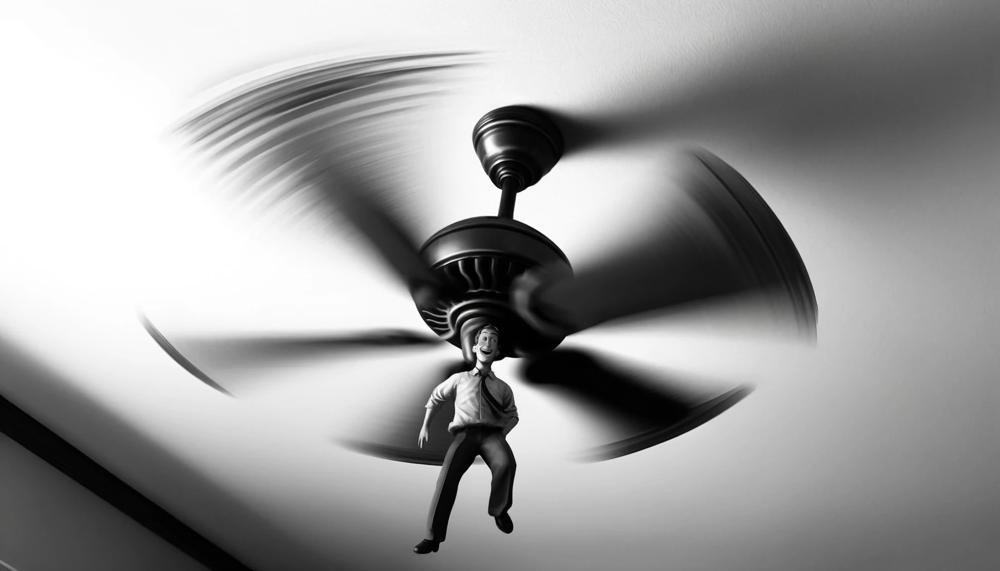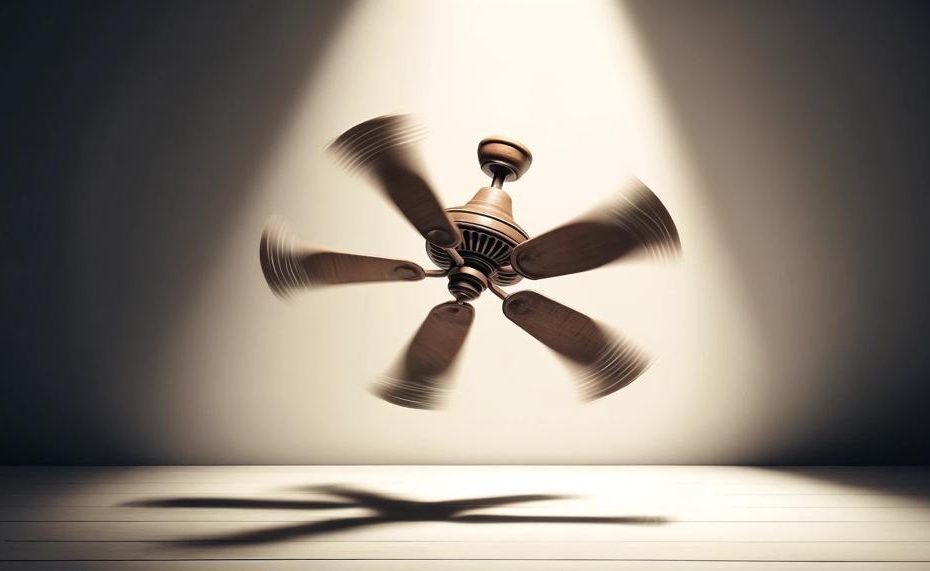In the quest to maintain a serene and comfortable home environment, a ceiling fan’s gentle breeze is often the unsung hero. Yet, when that calming whirl begins to wobble, especially at lower speeds, it morphs from hero to headache, casting an unsettling vibe across our spaces.
This unexpected behavior not only raises concerns about the fan’s stability but also ignites curiosity about the mechanics at play. Why does this wobble occur primarily at lower speeds, and what can homeowners do to restore their peaceful oasis?
In this insightful article, we’ll unravel the mysteries behind a ceiling fan’s low-speed wobble, offering clarity and practical solutions.
So, why My ceiling fan wobbles on low speed?
A ceiling fan can wobble on low speed for a number of reasons, including:
- Loose screws: Loose screws can cause blades to become unbalanced, which can cause the fan to wobble.
- Unbalanced blades: Over time, blades can become unbalanced, which can cause the fan to wobble. This happens when too much weight is put on one blade, which throws off the fan’s center of gravity.
- Bent blades: Over time, blades can warp and become bent, which can mess up the center of gravity and cause the fan to shake.
- Uneven blades: If the blades are not the same distance from the ceiling, the fan can wobble. You can use a measuring tape to measure the vertical distance from the tip of each blade to the ceiling. If any blade is a different distance, you can tighten the mounting screws that attach to the motor housing on that blade.
Contents
Best Universal Remote For Ceiling Fan

The best universal remote for ceiling fans, heralded as the editor’s choice, is the LPHUMEX Universal Ceiling Fan Remote Kit. This accolade is attributed to its unparalleled compatibility with a broad range of ceiling fan models, and its comprehensive feature set that enriches user experience.
The table below outlines why the LPHUMEX stands out in the realm of home improvement and DIY solutions for ceiling fan control:
| Feature | Description | Benefit |
| Compatibility | Works with most pull-chain ceiling fans | Transforms outdated fans into modern, remote-controlled devices |
| Installation | Basic technological and electrical skills needed | Enables DIY enthusiasts to upgrade fans without professional help |
| Smart Home Integration | Can be integrated into smart home setups with additional adapters | Makes ceiling fans part of a connected home environment |
| Troubleshooting Support | Includes tips for battery checks and reprogramming | Ensures longevity and reliability of the remote system |
The LPHUMEX Universal Ceiling Fan Remote Kit shines because it turns an everyday ceiling fan, possibly with an archaic pull-chain, into a device that’s both convenient and modern.
Whether it’s controlling the fan speed from the comfort of your couch or integrating it into your home’s automation system for voice control, this kit is a quintessential upgrade. Given the rise of home automation, the ability to retrofit existing household items for enhanced functionality is invaluable.
This remote kit not only elevates the usability of ceiling fans but also adds a layer of safety by eliminating the need for potentially hazardous pull-chains.
Steps On How To Fix A Wobbly Ceiling Fan
Fixing a wobbly ceiling fan ensures it runs smoothly and safely, especially at low speeds. Here’s a guide to troubleshoot and solve the issue:
- Turn Off the Power: Safety first. Ensure the fan’s power is off by switching off the circuit breaker or the wall switch.
- Inspect and Clean the Blades: Accumulated grime can unbalance the blades. Wipe them down with a damp cloth, checking for damage. Replace any cracked or broken blades.
- Secure Screws and Bolts: Loose fittings may cause wobbling. With a screwdriver, tighten the screws on the fan blades and the bolts securing the fan to the ceiling mount.
- Balance the Blades: Use a balancing kit if the fan still wobbles. Attach the clip to each blade in turn to identify the unbalanced one. Apply the weights to correct the imbalance.
- Examine the Mounting Bracket: A shaky bracket can lead to instability. Ensure it’s tightly secured to the ceiling and the fan. Tighten any loose connections or replace the bracket if damaged.
- Consider a Ceiling Fan Stabilizer: For persistent wobbling, a stabilizer can offer extra support, dampening vibrations and providing a steadier operation.
Conclusion
While we enjoy the soft hum of ceiling fans in our homes, an unpleasant wobble at low speeds can make us uncomfortable and cause us to wonder about the fan’s steadiness and mechanics. There are a number of easy to slightly more complicated reasons for this effect, which is often more visible and confusing when the fan moves slowly.
To make a stable and quiet fan, the first step is to learn how to keep it in the right balance. If there are any issues with this balance, like loose screws, misplaced blades, or even just dust buildup, it can cause that annoying wobble. What’s good? Most of the time, fixing these problems requires only a little attention to detail and a desire to do some simple tinkering.
If this is happening with your ceiling fan, follow these steps to get your room back to normal: clean and check the blades, fix the connections, and if needed, use a balancing kit to make sure everything is straight. Even though these things are easy to do, they can have a big effect on how well your fan works, making sure it blows steadily without wobbling.
Focusing on protection and regular upkeep can help to avoid most wobble problems. This will ensure that the ceiling fan stays the hidden star of our home’s comfort, keeping our rooms warm and well-ventilated without making a sound.





